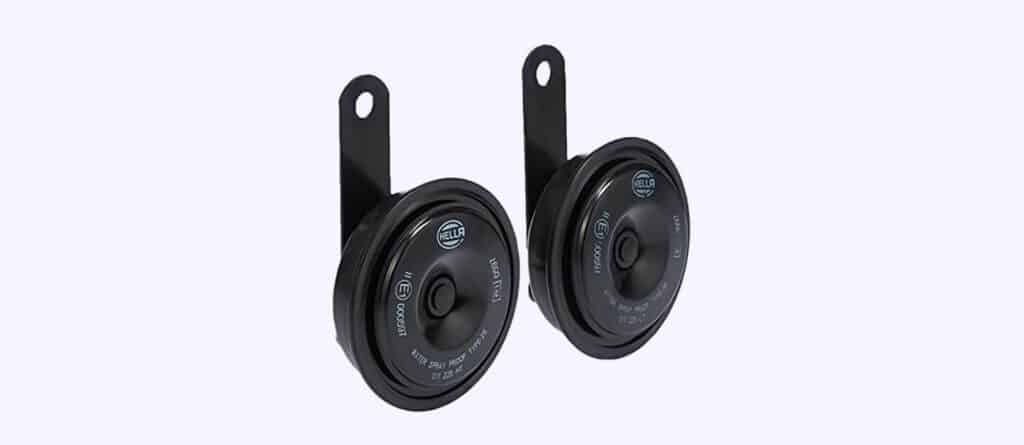Introduction: Ensure Your Vehicle’s Safety with a Fully Functioning Horn
A vehicle’s horn is an essential safety feature that allows drivers to alert others of their presence or potential hazards. In this guide, we will discuss the importance of a functional horn, the cost of replacement in Canada, and tips for prolonging its life. Let’s get started!
What is a Horn?
A horn is an audible signaling device installed in vehicles to produce a loud noise, allowing drivers to alert other road users of their presence or potential hazards. It is an essential safety feature that helps prevent accidents and enhances overall road safety.
How Much Will it Cost to Replace a Horn in Canada?
• Parts: $30 – $100
• Labor: $50 – $100 (0.5 to 1 hour)
• Total: $80 – $200
The cost of replacing a horn in Canada can vary depending on the type of horn and the vehicle’s make and model. On average, you can expect to pay between $80 and $200 for parts and labor.

What are the Symptoms of a Faulty Horn?
Symptoms of a faulty horn may include:
• Inconsistent or weak sound: The horn may produce a weaker or inconsistent sound, indicating that it’s not working properly.
• No sound at all: If the horn doesn’t produce any sound when pressed, it is likely faulty or completely nonfunctional.
• Intermittent functionality: The horn may work occasionally or only when pressed in a specific manner, which could point to a loose connection or internal component issue.
• Unusual noises: If the horn makes unusual noises, such as a buzzing or clicking sound, it may indicate a problem with the internal components or electrical connections.
• Blown fuse or warning light: A blown horn fuse or a warning light on the dashboard related to the horn system could signal a faulty horn or an electrical issue within the circuit.
How Long Does a Horn Last?
A horn’s lifespan can vary depending on the quality, usage, and environmental conditions. With proper care and minimal usage, a horn can last for many years or even the entire life of the vehicle.
How Does a Horn Become Defective?
A horn can become defective due to several reasons:
1. Wear and tear: Over time, the internal components of the horn may wear out or degrade, causing it to malfunction or stop working altogether.
2. Moisture or corrosion: Exposure to moisture, humidity, or road salt can cause corrosion on the horn’s electrical connections or internal components, affecting its performance.
3. Electrical issues: Wiring problems, such as damaged or loose wires, can interrupt the flow of electricity to the horn, leading to intermittent or complete loss of function.
4. Blown fuse: A blown fuse can disrupt the electrical supply to the horn, rendering it nonfunctional. Fuses can blow due to electrical surges or short circuits within the horn or other components in the circuit.
5. Damage from impact or accidents: Physical damage from an accident or impact can cause the horn to become misaligned or damaged, affecting its functionality.
6. Faulty relay or switch: A defective horn relay or switch can interrupt the signal between the horn button and the horn itself, causing the horn to malfunction or not work at all.
How Can a Faulty Horn Affect Other Systems in the Car?
• Limited communication: A faulty horn compromises your ability to communicate with other drivers, pedestrians, or animals, increasing the risk of accidents in certain situations.
• Legal implications: Driving with a non-functional horn can lead to fines or penalties, as a working horn is a legal requirement in many places.
• Indirect safety risk: While a faulty horn may not directly affect other systems in the car, it reduces overall vehicle safety by preventing you from alerting others in potentially dangerous situations.
Is it Safe to Drive with a Faulty Horn?
Driving with a faulty horn may not pose an immediate threat to your safety, but it can put you at a higher risk in certain situations. A functional horn is an essential safety feature that allows you to alert other drivers, pedestrians, or animals of your presence, particularly in cases where a collision may be imminent. If your horn is not working, you may be unable to communicate effectively in traffic, potentially leading to dangerous situations.
In many places, a working horn is a legal requirement, and you can be fined or penalized if you are caught driving with a faulty horn. While the lack of a working horn may not cause accidents directly, it can prevent you from warning others in situations where quick action is necessary to avoid collisions. As a precaution, it is always best to repair or replace a faulty horn as soon as possible to maintain your safety on the road and to stay in compliance with local regulations.

How Can I Make My Horn Last Longer?
• Use your horn sparingly and only when necessary
• Regularly inspect and clean the horn and its connections to prevent corrosion
• Address any electrical issues promptly to minimize the risk of damage to the horn
Can a Mobile Mechanic Replace a Horn?
Yes, a mobile mechanic can replace a horn, provided they have the necessary tools and expertise. This convenient service allows you to have the horn replaced without having to visit a repair shop.
Conclusion: Horn Replacement
A functional horn is crucial for maintaining road safety and preventing accidents. By following the tips provided in this guide, you can prolong the life of your horn and ensure your vehicle is equipped with an essential safety feature. Replace a faulty horn promptly to keep yourself and other road users safe.
Next Steps
Book Your Horn Replacement Service
The service most frequently booked by those who read this article is Horn Replacement. Uchanics’ expert technicians make the process even more convenient by bringing the service right to your doorstep. We perform this job at your home or office, covering over 40 cities in Ontario, including Toronto, Mississauga, Brampton, Oshawa, Ajax, Scarborough, and more. Our commitment to excellence has earned us more than 700 glowing 5-star reviews. Choose Uchanics for your Horn Replacement and experience unparalleled convenience and top-quality service.

